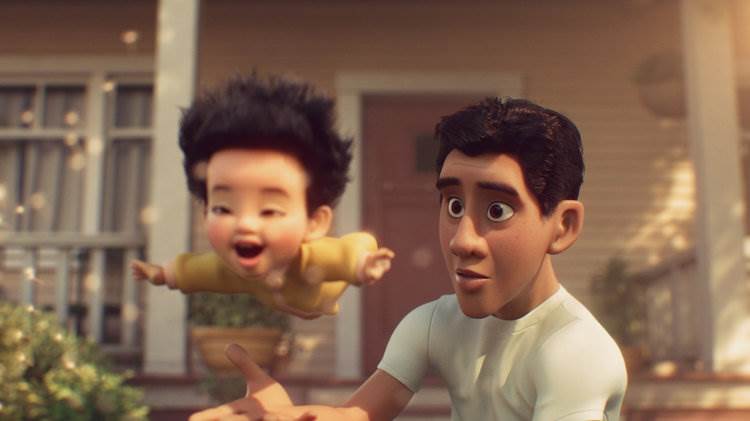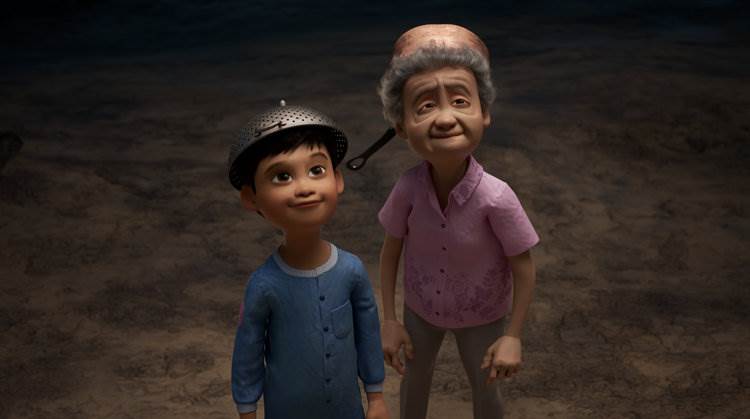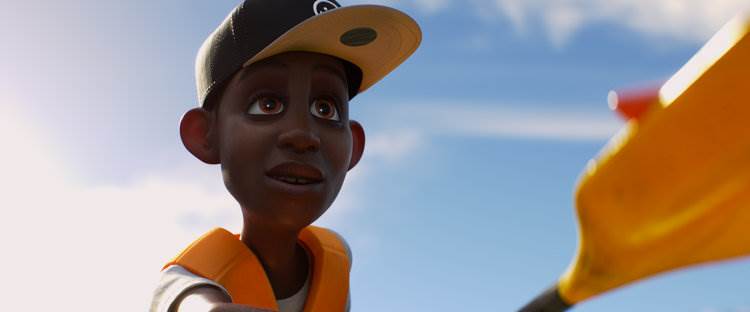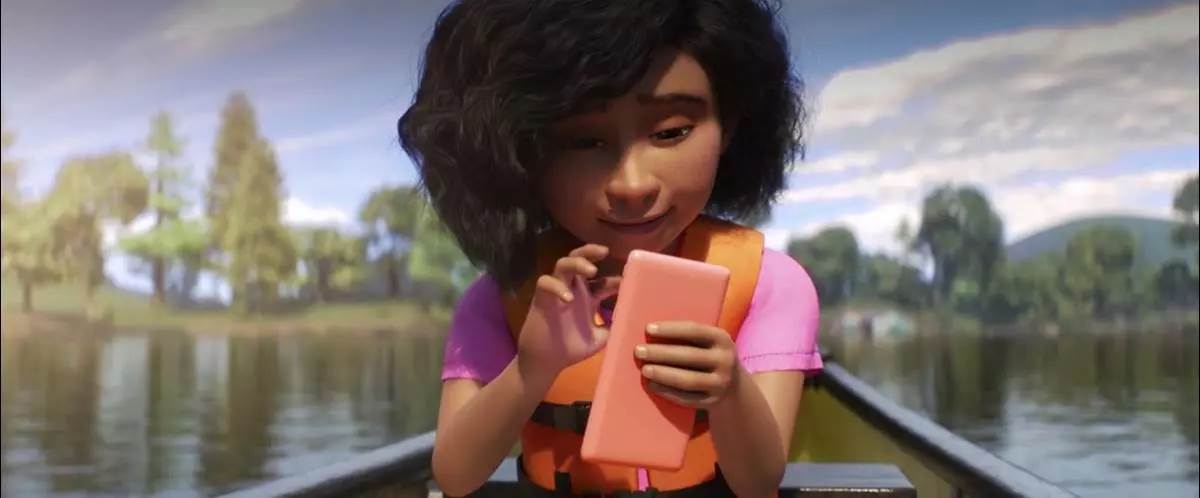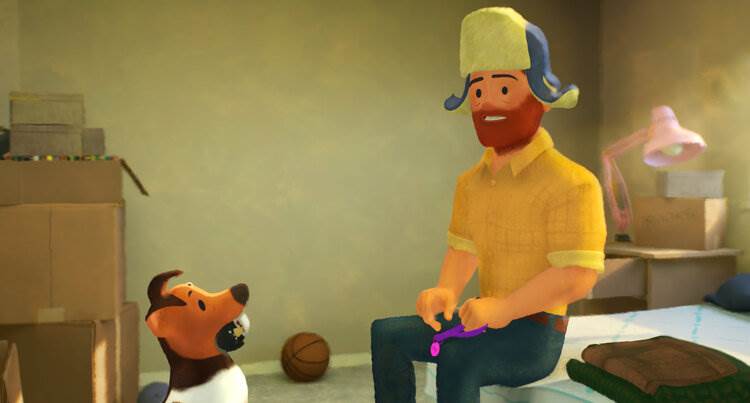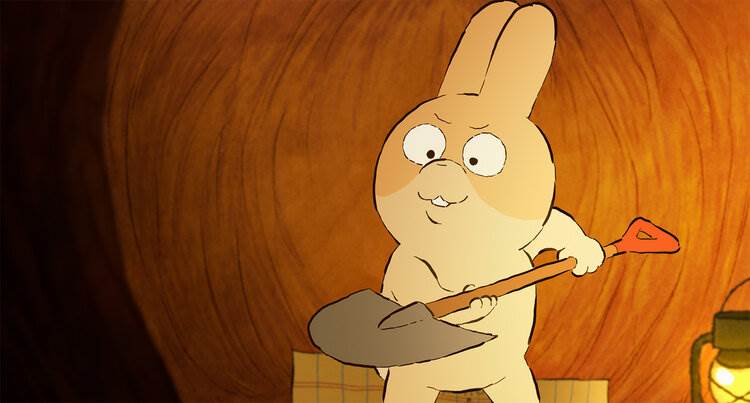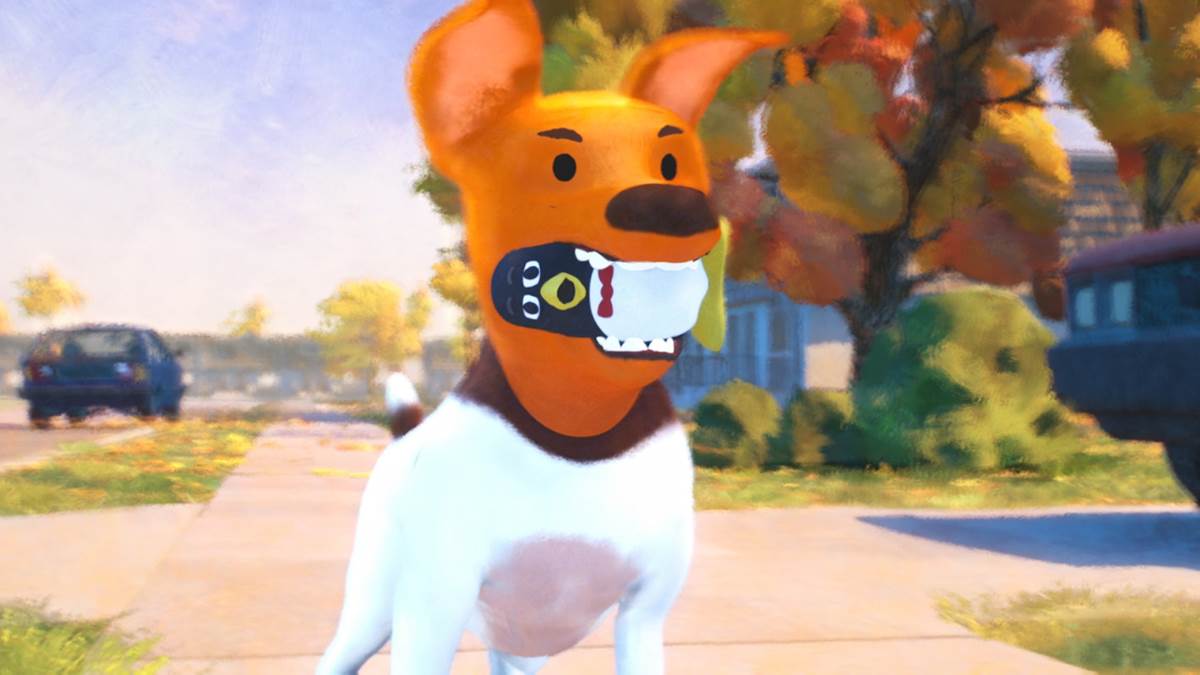Today, VIEW, an Italian conference on Computer Graphics, Interactive Techniques, Digital Cinema, 2D/3D Animation, VR and AR, Gaming and VFX, held a special forum as part of its program featuring a discussion with five directors of different Pixar SparkShorts that are under award consideration this year. Hosted by Animation World Network’s Dan Sarto, the panel featured Edwin Chang (Wind), Bobby Rubio (Float), Erica Milsom (Loop), Steven Hunter (Out), and from the latest Pixar SparkShort, Madeline Sharafian (Burrow).
To catch up, Pixar’s SparkShorts program is designed to discover new storytellers, explore new storytelling techniques, and experiment with new production workflows. These films are unlike anything ever done at Pixar before, providing an opportunity to unlock the potential of individual artists and their inventive filmmaking approaches on a smaller scale than the studio’s normal fare. It has even been described as the new, almost independent, arm of the studio. The new label also allows for different experiments in technique, look, and diversity that hasn’t been seen yet from the studio.
The panel started with the different directors introducing their films and providing a brief synopsis for each one. Burrow, Out, Float, Loop, and Wind are available for viewing on Disney+ and if you aren’t already familiar with each one, I suggest you take a moment and go enjoy these beautiful short films before continuing on.
Like all Pixar films, whether full-length or a short, the films mentioned have more than meets the eye on the surface, especially with the SparkShorts as they all have a personal story to tell. Madeline Sharafian shared that Burrow actually stemmed from her own personal experience at Pixar, and her desire to prove that she knew what she was doing, fearful that asking for help would make her appear out of place or that she didn’t deserve her job there. She added that just like in the short, you can only do that for so long before finding yourself in a disastrous situation where you inevitably have to ask for help. She said when that actually happened in her days as a story artist, she got to a point where she broke down and asked others for help, she was astounded by how easy it was and how willing everyone was to help her when she needed it.
While Bobby related his story (Float) to his discovery that his son was on the autism spectrum, as well as Erica’s story (Loop) stemming from her work with those with disabilities, and Steve’s deeply personal story (Out) about coming out to his parents, Edwin’s story (Wind) comes from his own family history. Though in his film we see a boy and his grandmother building a rocket to escape this magical chasm, the whole thing was inspired by his grandmother, who took care of her kids (including his Dad) and helped send them to the U.S. for a new life during the Korean War. They left his Grandfather behind, not realizing it would be the last time they would see him. He added that the story is a metaphor for immigration, and yes it’s a little dark, but there’s a sense of optimism and love between the two characters.
The timing of the film was purely coincidental, as the production lined up with recent troubles at the border, and according to Edwin, “it was just kind of one or two sides of the story that we're being told. So for me, it was so important to sort of put a different perspective out there of showing that these decisions are never easy. And they're both full of fear and hope at the same time." Timing was also very coincidental in the themes of Burrow, with Madeline noting that the isolation and community themes that are represented in the film were all thought of and made before the COVID-19 pandemic. The film was complete before lockdowns and everything, it just so happened to be released during the pandemic and audiences found this new way to relate to the film.
One thing that is great about the SparkShorts program that all the directors echoed, is that there are all these diverse voices at the studio that allow their voice to be heard, and their stories to be told. Erica, who directed Loop, said of various representations, “when we see each other in a story, we lend each other more humanity.” Loop features a non-verbal girl with autism, something Erica has experienced through her work volunteering around the Bay Area, though that doesn’t make her an expert. Using Pixar and the resources available to her, she was able to work with Autism Allies and Advisors to treat the subject with respect, dignity, and accuracy. Madison Bandy, the voice of Renee in the film, is also on the autism spectrum, as Erica and Pixar felt you couldn’t accurately and respectfully portray such a character without it appearing negatively, saying the film couldn’t be “about that, without that.” In fact, the aesthetic of the short film was chosen as the Pixar house style, not out of convenience or ease, but to subliminally be inclusive and not appear as some kind of caricature. If the short were to have its own models and style, that would exacerbate the idea of difference not inclusion.
Bobby, who directed Float, openly admitted though that he himself is Filipino, he pictured his characters in his story, as caucasian, simply because that’s how it usually is. It wasn’t until the powers that be at Pixar said “Well, this is your story, so why don’t you make them Filipino?” that he even thought of doing that. In the end he did, but they chose the Pixar house style and look for his characters for a less subtle reason. “Budget” he said, adding that it would be too costly in both time and money to come up with new models, rigs, and looks for everything for his short film.
For Burrow, Madeline said that the look of her film came from her desire for cute things, that she wanted it to look like something she would like to see. But the big question for her short film was, “Why 2D?” She went on to explain that with the SparkShorts program, there is only a limited amount of time and resources. What she had envisioned would have far exceeded that in terms of character design, environments, and staging. Thanks to Kitbull, which broke ground as a 2D short for Pixar (Day and Night also has 2D elements but wasn’t fully in the traditional format), she had no problems when she approached the higher-ups and said “It should be 2D.” Thinking she was going to get push back, she simply got “Ok.” While animators and specialty artists kind of come and go throughout the SparkShorts films to work on other things, Madeline said that her animation team nearly doubled at times because the animators wanted to work on a 2D film.
For Steven’s Out, he had a decidedly different look that he said was inspired by old childrens books like the Little Golden Books, and even though computer animated, wanted it to look like little paintings and illustrations. His art team though had a different struggle, as production on his SparkShort (Which normally is about 6 months) expanded to a year and a half since they were pulled to work on Onward, and he himself on an animation team, was also moved to other areas as needed. Steven also said that growing up, Star Trek was his favorite thing to watch because of the diverse cast on the show. He even went on to geek out about Spock’s belief in “IDIC” or Infinite Diversity in Infinite Combinations, saying he wanted to steer clear of the straight white male archetype in his film. Out was a deeply personal experience for himself he said, as he said he came out to his parents when he was 27, and he is now 51 saying he felt like he spent half of his life not being true to himself. His short film finds lead character Greg, afraid to tell his parents about his boyfriend Manuel, magically transforming into his dog only to realize that his mom already knows of his orientation, with both parents being very accepting. He says despite being moved by audiences who watch and enjoy the film, his favorite thing is when kids don’t see the problem in why Greg was hiding in the first place, and have to ask their own parents “Why can’t Greg love Manuel? I don’t understand.”
Making the films is not the cake job some think it is though, and the first-time directors all shared their most terrifying experiences. Edwin said his entire background is technical, so to helm the whole production was overwhelming and he’d find himself walking loops around the studio, and would come in through the studio’s security gate and feel the weight of the giant letters that spell out “Pixar” each day he came in. Along the same lines, Erica had never worked in the animation pipeline before, so she shared in the crisis of confidence, but more importantly she felt that her biggest challenge was her two lead characters. One young Black man, and one non-verbal girl on the autism spectrum, “neither of those I identify with” she said, fearing that she would represent both poorly, resulting in her biking to work because of this “bizarre obsessiveness” with getting the story right. Steve said he argued with the petulant child inside himself everytime he would get a critique, having to remember that he’s a first time director and can’t yell back “No, I think YOU’RE wrong! And I don’t think THAT works!” Madeline said she basically said goodbye to all her friends and social life, whereas Bobby felt he harassed them too much, asking “What do you think of this?” numerous times.
Steve summed up the experience best when he said of his film Out, and what would likely be echoed by the other directors on the panel, “You leave a piece of you on the screen.” Seeing an audience laugh where they’re supposed to, cry where they’re supposed to. It has a more personal effect when it's a personal story. Thanks to the SparkShorts program, with its pillars of experimentation, diversity, and inclusion, it’s only a matter of time that we as the viewer will have something we can connect deeply with, if we haven’t already.

